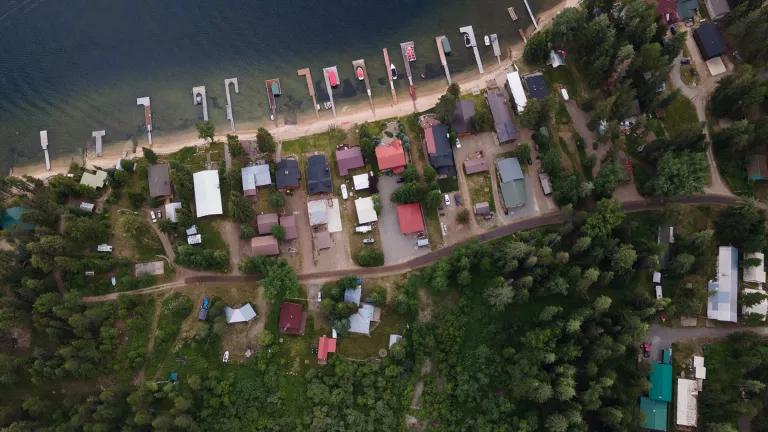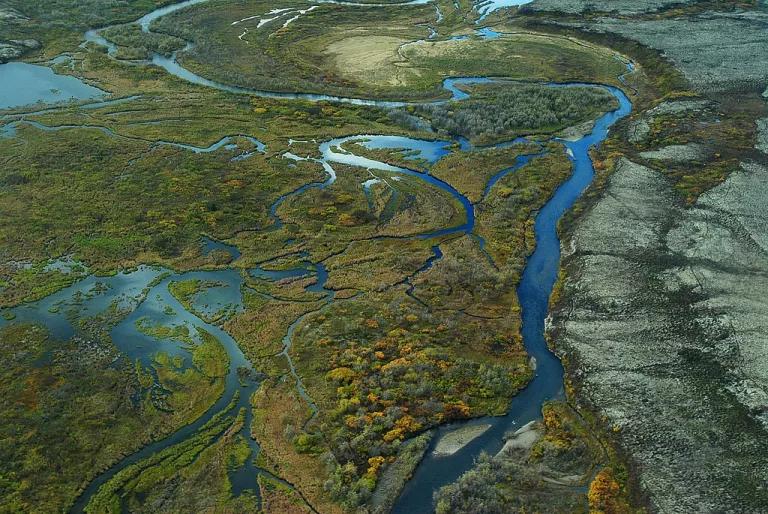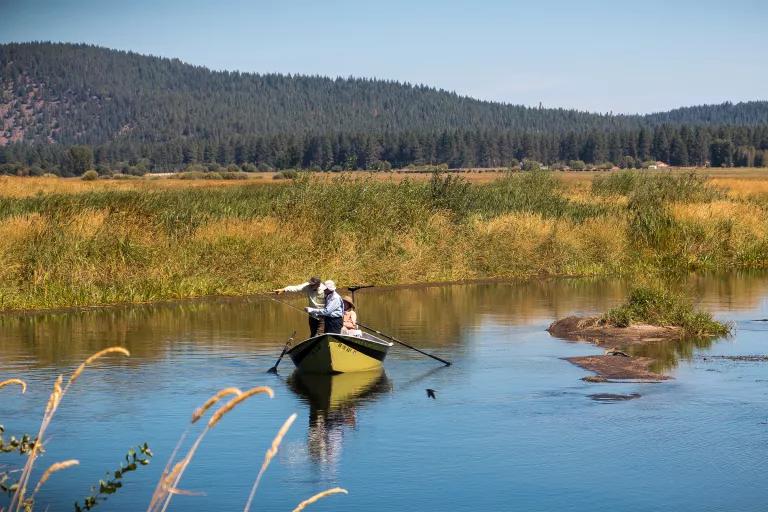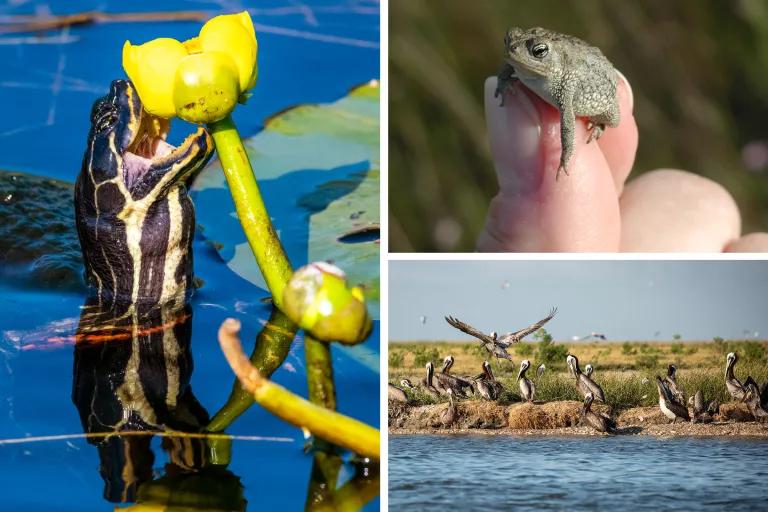What the Supreme Court’s Sackett v. EPA Ruling Means for Wetlands and Other Waterways
How the twisting of words in the Clean Water Act spells disaster.

The area around the Sacketts’ property, located near Priest Lake in Idaho
Pacific Legal Foundation via flickr, CC BY 4.0
The ruling last month by the U.S. Supreme Court (SCOTUS) in Sackett v. Environmental Protection Agency (EPA) has enormous ramifications for the health of the nation’s waterways. In fact, it wouldn’t be hyperbole to call Sackett the most important water-related Supreme Court decision in a generation. Unfortunately, a majority of the justices used the case as a tool for dramatically weakening the Clean Water Act—by deciding for themselves, without any scientific support whatsoever, what wetlands deserve protection from pollution and destruction.
The background of the case
Michael and Chantell Sackett, who ran an excavation company, sought to develop property a few hundred feet from Priest Lake, a popular vacation site in the Idaho Panhandle, with plans to build a house there. To prepare the lot for construction, the Sacketts began to fill it with gravel. In 2007, responding to a neighbor’s complaint, the EPA halted the work after determining that the Sacketts’ lot contained a federally protected wetland. Under the authority granted to it by the Clean Water Act, the agency ordered the couple to remove the gravel and cease any further construction without a permit. The Sacketts sued in 2008, and the case wound its way through the federal court system for the next 14 years. Among other things, their lawyers argued that the wetland the Sacketts filled was not a protected “water of the United States,” merely because there was dry land between it and other bodies of water—and thus it wasn’t subject to EPA regulation.
What are the “waters of the United States”?
Since 1972, the Clean Water Act has played an essential role in protecting the country’s diverse array of aquatic environments from pollution and keeping them safe for fishing, swimming, and wildlife (not to mention as sources of drinking water for millions of people). And for roughly that same amount of time, the act has also been the target of polluters and developers who would like to limit its regulatory scope. One way they’ve attempted to do so? By focusing on a particular—and pivotal—bit of language found in the law, five simple words that carry enormous legal weight: “waters of the United States” (or WOTUS, for short).

Utilizing the Clean Water Act, the EPA is currently in the process of vetoing the Pebble Mine in Alaska’s Bristol Bay, which would pose a critical threat to the area’s wetlands.
EPA
Numerous pollution control programs in the Clean Water Act apply only to these protected waters. For most people, defining “waters of the United States” is a pretty straightforward matter: The phrase refers to—or at least seems like it would be referring to—the many different bodies of water to be found within the geographical borders of our nation. And according to Jon Devine, the director of NRDC’s federal water policy team, that’s pretty much the correct way to define it.
“Congress intended the phrase to be interpreted very broadly,” says Devine. When lawmakers were drafting the Clean Water Act half a century ago, he says, they envisioned its protections as extending to all the various bodies of water that make up a watershed, many of which people use for recreation, fishing, and drinking water supply. And while those lawmakers may not have been hydrologists, they nevertheless understood the fundamental interrelatedness of these different bodies of water. “So the very earliest regulations set forth by the EPA were inclusive,” Devine notes. As a jurisdictional matter, WOTUS comprised “all the relevant parts of an aquatic ecosystem, including streams, wetlands, and small ponds—things that aren't necessarily connected to the tributary system on the surface, but that still bear all kinds of ecological relationships to that system and to one another.”
Still, given the restrictions on how people could interact with these protected waters, interested parties were inclined to litigate the meaning of the term over the decades. “There were always fights about it,” Devine says. “A developer who wanted to bulldoze a wetland, or a polluter who was being prosecuted for dumping into a small stream, would question whether that particular feature should really be considered a water of the United States.” But, as Devine notes, “they largely lost.” And as a result, the more inclusive definition prevailed. Or at least it did until the early 2000s, when cracks in that foundation began to develop—cracks that ultimately led to the Clean Water Act’s rupture at the hands of the current Supreme Court.
SCOTUS on WOTUS
To grasp the importance of the Sackett ruling, it’s important to understand the tension between two past opinions authored by Supreme Court justices Antonin Scalia and Anthony Kennedy in an earlier 2006 case, Rapanos v. United States. Like Sackett v. EPA, it also involved someone filling wetlands without a permit to do so. In their individual opinions, Scalia and Kennedy outlined two contrasting ways of identifying which waters merited protection under the Clean Water Act. For Scalia, those that qualified had to be either so-called navigable waters (think rivers, lakes, basically anything that can accommodate a boat), regularly flowing tributaries to those waters, or wetlands—so long as those wetlands had a continuous surface connection to a body of water that already enjoyed federal protection.

The Wood River Wetland in southern Oregon is home to an array of biodiverse vegetation and is a freshwater ecoregion.
Greg Shine/BLM
Kennedy saw things differently. He maintained that the connection between wetlands and other bodies of water didn’t necessarily have to be visible—i.e., continuous and on the surface—but could be measured in other ways. For Kennedy, the far more important question was: Does a given wetland share a significant nexus with another, adjacent body of water that’s already protected? Or (in somewhat plainer English), would polluting or destroying certain wetlands affect the physical, chemical, or biological health of the second body of water? If the answer was yes, Kennedy believed, then both deserved the same level of protection.
Although the lower courts consistently ruled that wetlands satisfying Kennedy’s test must be protected (consistent with the views of both the Bush and Obama administrations), polluting industries kept arguing that Scalia’s view should govern. The Trump administration adopted a definition based on the Scalia approach, but it was struck down in court when the Biden administration refused to defend it. Which brings us to Sackett: a case that has effectively turned the tables by solidifying Scalia’s view as the new standard for determining the connectedness of water bodies.
The impact on our wetlands—and our water
Though the court technically ruled unanimously in favor of the Sacketts—all nine justices agreed that the specific wetlands in the case didn’t qualify for protection—the real damage from Sackett is in how the court elaborated on their opinions, which tell a very different story.
Writing for the 5-to-4 majority, Justice Samuel Alito asserted that the late Justice Scalia’s definition of “waters of the United States” was the proper one: any wetland that does not connect at its surface to another body of federally protected water doesn’t merit the same degree of protection. Alito dismissed the significant nexus rule established by the now-retired Justice Kennedy as “particularly implausible.”

From left: A Florida red-bellied cooter turtle in the Everglades; an oak toad in Everglades; migratory birds near wetlands in Louisiana
No credit; NPS; Julie Dermansky
As almost any water expert would tell you, Alito’s opinion has no basis in science. Water flows in all sorts of ways: aboveground; belowground; rapidly, down rivers and streams; and also slowly—through the cleansing filters of the reeds, soils, and grasses that make up a wetland. “The notion that the law can’t protect a body of water, simply because there’s a road between it and another body of water that’s unquestionably protected, is absurd and unscientific,” Devine says. “And it would defeat the purpose of the Clean Water Act.” It’d surely come as a surprise to the members of Congress who wrote the law that, as Justice Alito contends, “the CWA does not define the EPA’s jurisdiction based on ecological importance.”
Interestingly, support for the scientifically backed position that wetlands are intrinsically connected to adjacent waterways came from one of the court’s most staunchly conservative justices. Justice Brett Kavanaugh disagreed vociferously with Alito and his other colleagues in the majority. In his opinion, Kavanaugh took issue with “the Court’s rewriting of adjacent to mean adjoining.” This echoed Justice Elena Kagan’s opinion that “in ordinary language, one thing is adjacent to another not only when it is touching, but also when it is nearby. So, for example, one house is adjacent to another even when a stretch of grass and a picket fence separate the two.” Kavanaugh expressed his well-justified concern that this SCOTUS decision may “leave long-regulated and long-accepted-to-be-regulable wetlands suddenly beyond the scope of the agencies’ regulatory authority.”
In the words of one of those agencies, the EPA, wetlands “are among the most productive ecosystems in the world, comparable to rainforests and coral reefs.” By regulating water flow, they dramatically lessen the impact of both floods and droughts. They provide habitat for all manner of fish, birds, mammals, insects, reptiles, and amphibians. And they do all of these things while storing massive amounts of carbon in their abundant vegetation—making safeguarding wetlands a valuable natural climate solution.
Nevertheless, a majority of the Supreme Court has decided that it knows better than scientists, the EPA, and Congress. Our country’s wetlands, the waterways that are intrinsically connected to them, and the people who rely on them will suffer as a result.
This NRDC.org story is available for online republication by news media outlets or nonprofits under these conditions: The writer(s) must be credited with a byline; you must note prominently that the story was originally published by NRDC.org and link to the original; the story cannot be edited (beyond simple things such as grammar); you can’t resell the story in any form or grant republishing rights to other outlets; you can’t republish our material wholesale or automatically—you need to select stories individually; you can’t republish the photos or graphics on our site without specific permission; you should drop us a note to let us know when you’ve used one of our stories.

Protecting Biodiversity Means Saving the Bogs (and Peatlands, Swamps, Marshes, Fens…)
In Planning for Climate Change, Native Americans Draw on the Past
How to Become a Community Scientist